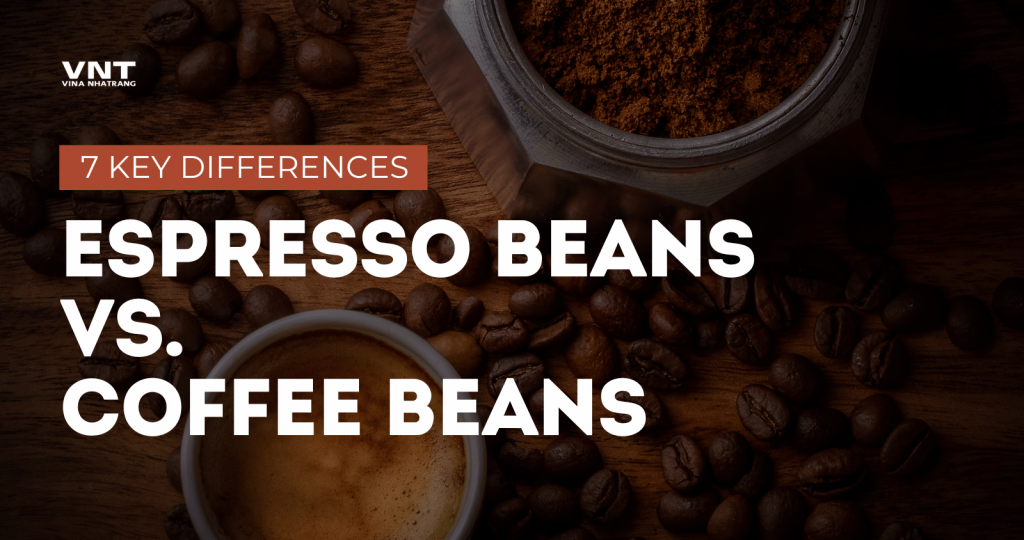If you’re a coffee enthusiast, you’ve likely encountered the terms “espresso beans” and “coffee beans” and wondered—what’s the difference? Do espresso beans really exist, or is it just clever marketing? Understanding the distinctions can elevate your coffee game, whether you’re pulling shots at home or brewing a classic pour-over. This guide unpacks everything you need to know about espresso beans vs. coffee beans, offering clarity, actionable tips, and insights that will have you brewing like a pro.
Espresso Beans vs Coffee Beans: The FAQs
Ever stood in a coffee aisle staring at “espresso beans” and “coffee beans,” unsure of what to choose? You’re not alone. Let’s dive into the details and answer the questions every coffee lover has, so you never have to wonder again.
1. Are Espresso Beans and Coffee Beans Really Different?
Imagine this: you’re at a café, and the barista hands you a beautifully crafted espresso shot. The taste is bold, velvety, and complex. Is it because of a magical “espresso bean”? Not quite.
Here’s the truth: Espresso beans and coffee beans are the same beans, but the difference lies in how they’re roasted and labeled.
- Espresso Beans are dark-roasted to highlight caramelized sugars and minimize acidity. They’re optimized for espresso machines.
- Coffee Beans is a catch-all term covering beans of all roast levels, used for various brewing methods like drip coffee, French press, and pour-over.
Takeaway: If you love the intense, rich flavor of espresso, look for darker roasts, even if they’re not labeled as “espresso.”
2. What’s the Secret Behind Espresso Roasting?
Picture the roasting process like creating a perfectly golden marshmallow over a campfire. For espresso beans, the roast goes further into the dark, bold territory—transforming sugars into caramel and reducing acidity.
- Espresso Roasts: These are roasted longer, bringing out deep, smoky, chocolatey notes that pair beautifully with milk in lattes or cappuccinos.
- Lighter Roasts: Highlight fruity, floral, and acidic notes, better suited for slow-brewing methods.
Why does it matter? The roast profile dramatically influences flavor. Want a smooth, full-bodied shot of espresso? A dark roast is your hero.
3. Does Espresso Have More Caffeine?
This one’s a shocker for many! People often think espresso is the most caffeine-packed drink. Here’s the surprising truth: caffeine levels depend on serving size.
- A 1-ounce shot of espresso has about 63 mg of caffeine.
- An 8-ounce cup of drip coffee contains roughly 95 mg of caffeine.
So, espresso is more concentrated, but drip coffee delivers a larger caffeine dose overall.
Pro Tip: Need an energy jolt without overdoing it? Sip a shot of espresso. Need a longer caffeine fix? Opt for a drip coffee.
4. Can You Use Regular Coffee Beans for Espresso?
Yes, but proceed with caution. Imagine trying to bake a cake with pancake batter—close, but not the same.
Espresso machines thrive on dark-roasted, oily beans that extract flavors quickly under high pressure. Using light or medium roasts might result in sour, uneven espresso shots.
Hack for Home Brewers: Want café-quality espresso? Use a burr grinder to achieve a fine, consistent grind, and stick to dark roasts.
5. Why Do Espresso Beans Taste Different?
Espresso beans are roasted to balance sweetness and bitterness while muting acidity. This creates the bold, satisfying flavor you expect from espresso.
Compare that to lighter roasts:
- Espresso Beans: Taste smooth, rich, and indulgent.
- Regular Coffee Beans: Taste bright, fruity, and sometimes tangy.
Fun Fact: Espresso beans are perfect for milk-based drinks like lattes because their boldness holds up against the creaminess of milk.
6. How Important Is the Grind Size?
Think of grind size as the secret sauce in brewing. Using the wrong grind can ruin even the best beans.
- Espresso Beans: Need a fine grind to build the pressure required for a concentrated shot with crema (that golden layer on top).
- Coffee Beans: Require different grind sizes depending on the method:
- Coarse: For French press or cold brew.
- Medium: For drip coffee.
Actionable Tip: Invest in a quality burr grinder for precision. A good grind makes all the difference!
7. Are Espresso Beans Worth the Price?
Espresso beans aren’t inherently more expensive, but specialty labels can add a premium. Why?
- Higher-quality beans.
- Small-batch roasting.
- Tailored blends for espresso machines.
Pro Tip: If you love espresso but want to save money, buy a high-quality dark roast labeled as “coffee beans” and grind it fresh at home.
Key Takeaways for Choosing the Right Beans
- For Espresso Lovers: Go for dark roasts with a fine grind for that bold, velvety shot.
- For Drip Coffee Enthusiasts: Experiment with medium roasts to find your favorite flavor profile.
- When in Doubt: Don’t overthink it—personal taste always wins.
These insights aren’t just for coffee nerds—they’re for anyone who wants to level up their brew. Share this guide with your fellow coffee enthusiasts and let them in on the secrets of espresso vs. coffee beans. The perfect cup awaits!
Conclusion
Understanding the difference between espresso beans and coffee beans can transform your coffee experience. While the terms can be confusing, the key lies in roast, grind, and brewing method. Whether you’re chasing the perfect espresso shot or savoring a smooth drip coffee, the right bean makes all the difference.
Remember, coffee is as much about the journey as the destination—so experiment, savor, and enjoy every sip.
Ready to elevate your brew? Share this guide with your coffee-loving friends and start a conversation about what truly makes the perfect cup!

